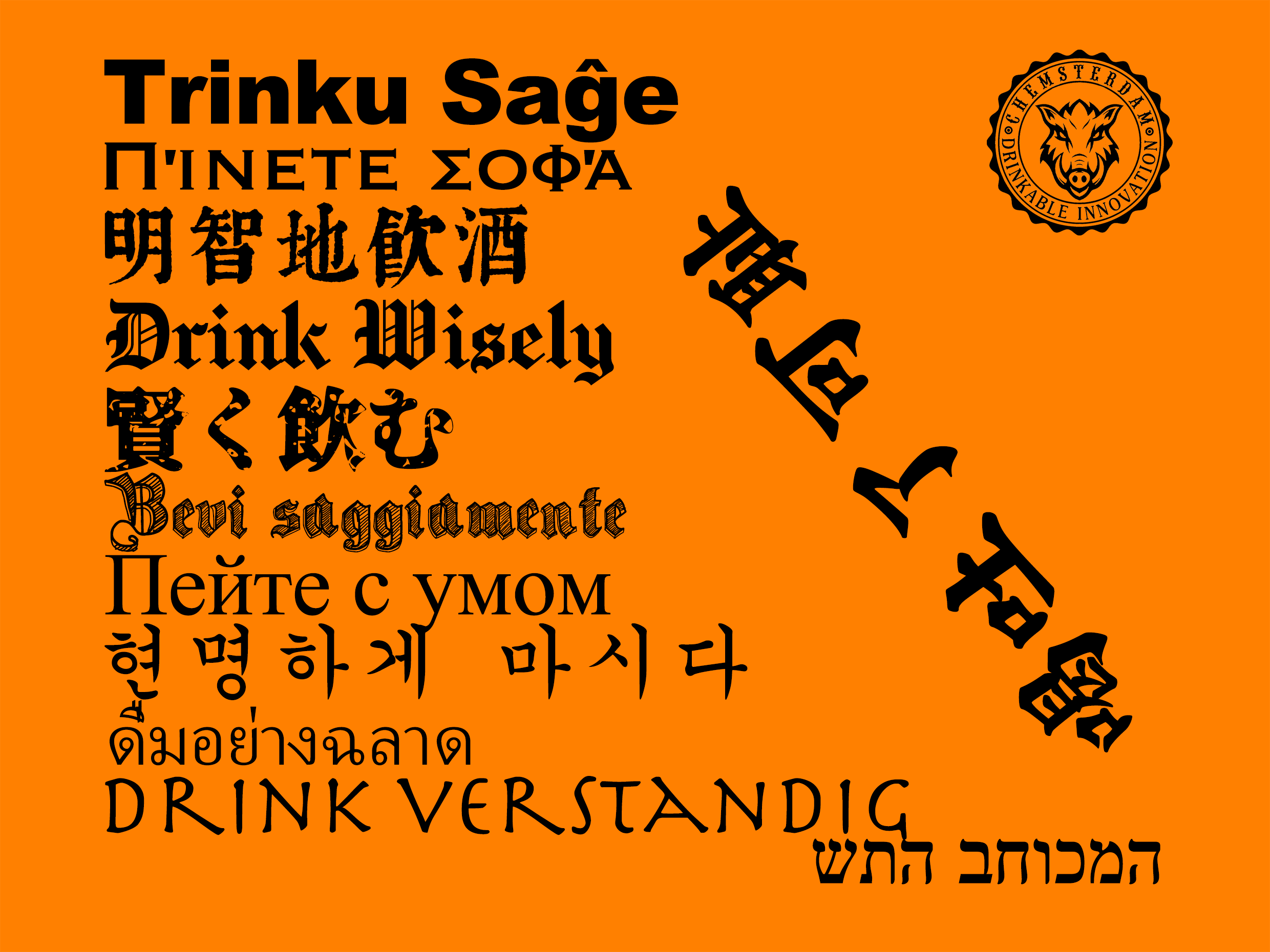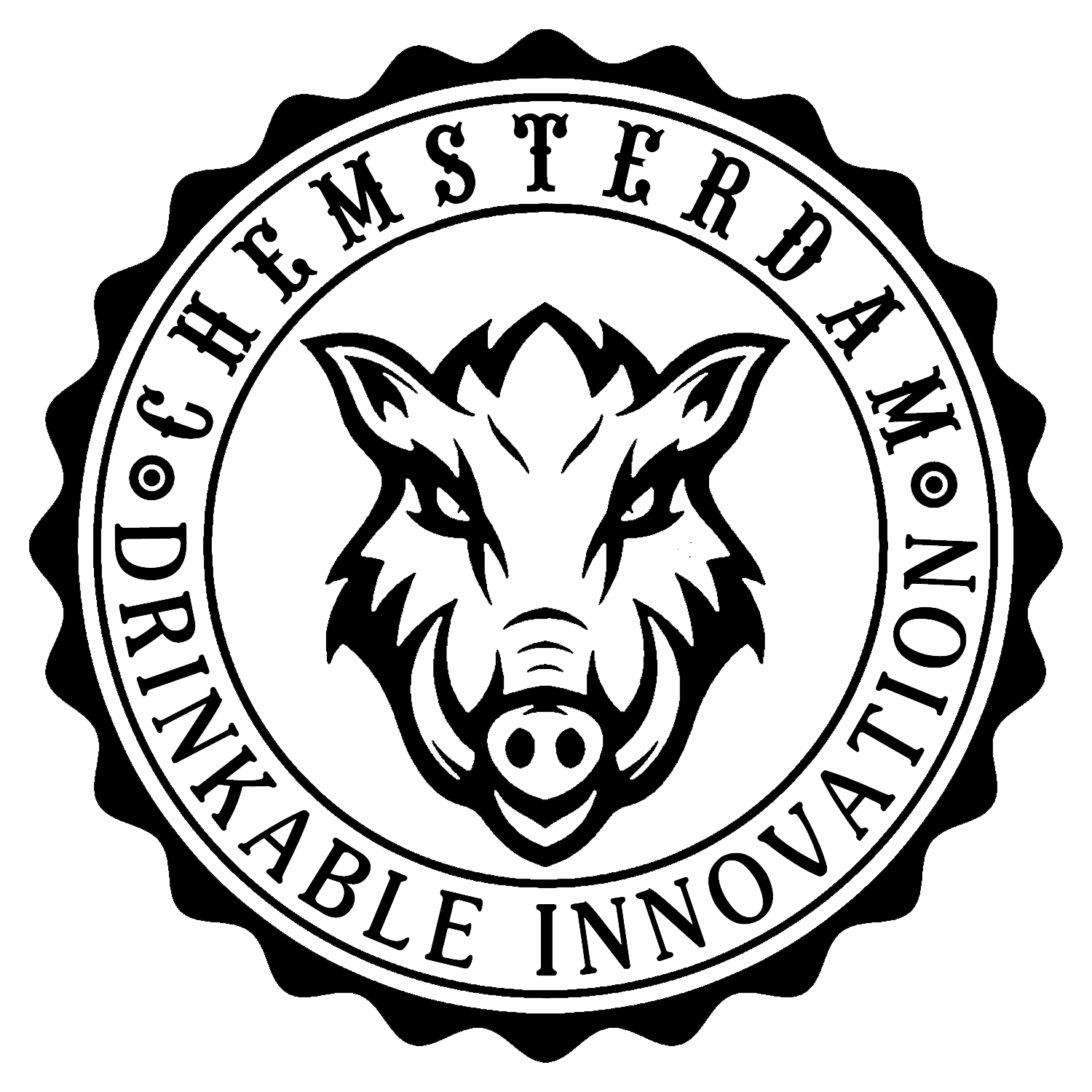3nd Edition being updated by Hans Ngo Wurfbain, July 17th, 2024
Anything contains complex sugars(starches) can be saccharified, fermented and distilled for strengthened spirits. The combination of material, composition of fermentation yeast, fermentation container, fermentation duration, distilling container and aging container, consists the DNA of all different flavors and tastes of distilled spirits.
Generally, sugars are broken down into glucose through a bio-chemical process with the support of bacteria and agents. Then yeast transforms glucose into alcohol. The fermented material can be distilled in relevant distilling pot to be condensed. Most of spirits are 67-75% of alcohol by volume. Bacteria can also produce organic acid, which will form the flavouring substances, mostly esters, with alcohol. Some spirits abstract flavours from herbs and containers during the aging process. Most of spirits are bottled after watering down to 38-53% of alcohol by volume.
Local Production with Local Production
If we look into the origin and geography of plants, we can understand more why the materials used for making spirits in different areas are different.

Generalised Logic of Spirits
(Newly Updated 15, Dec, 2023)


Sorghum Based Spirits
Sorghum origins from Africa, and it was firstly brought to China around 1150AD. Sorghum tastes not as good as rice or wheat products, then sorghum has been widely used for Baijiu production.
China's huge territory covers great variety of geo-environments, so that materials, bacteria and yeasts are different from place to place. Along the development of Baijiu production, there are many different production areas stands out with its own techniques, including mixtures of material, fermentation process and containers, distilling methods and aging process.
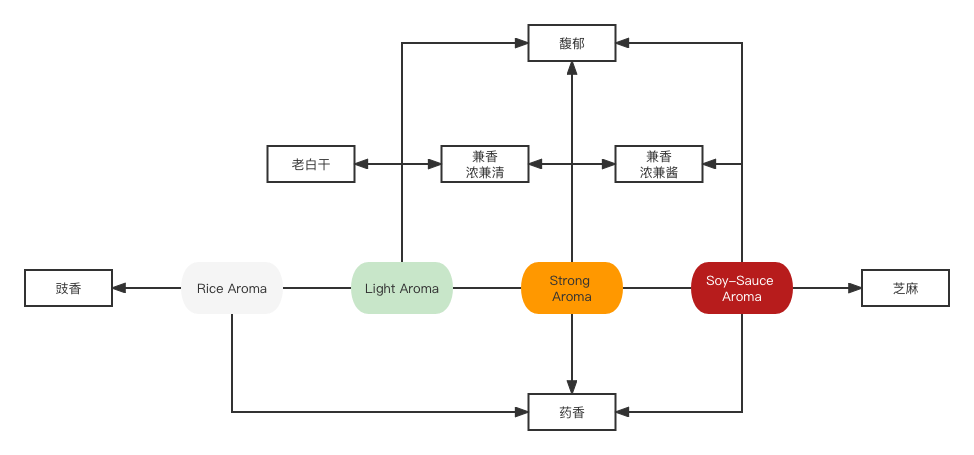
There are 4 significant categories of Chinese Baijiu, except rice-based Rice Flavor Baijiu, Strong Aroma Baijiu, Lighit Aroma Baijiu and Soy-Sauce Aroma Baijiu are all distilled from fermented Sorghum or mixture of grain with more than 40% of sorghum.
Strong Aroma Baijiu(SAB)
Most Strong Aroma Baijiu are distilled from the fermented grain mixture, including more than 40% of sorghum, rice, stick rice, wheat and corn. Only in Luzhou, SAB is distilled from 100% sorghum.
Strong Aroma Baijiu takes more than 65% of total Baijiu consumption in China. Strong Aroma Baijiu are mostly produced in Sichuan Province, Southwest of China.
Light Aroma Baijiu(LAB)
Light Aroma Baijiu takes about 20% of the total Baijiu consumption in China. It is more welcome in Northern China and coastal China.
Soy-Sauce Aroma Bajiu(SSAB)
Soy-Sauce Aroma Baijiu takes about 5% of total Baijiu consumption in China. It is usually the more expensive ones. This is the reason that Soy-Sauce Aroma Baijiu could make up to 20% of the total revenue of Baijiu sales.
Other Baijiu(OB)
Other 9 Aromas are more regional, and they make up to 10% of total Baijiu consumption.
Baijiu production process is traditional and heavily human labor involved. The process of strong aroma Baijiu is the agglomeration of traditional techniques, circular economic, balancing between nature and human. If anyone can understand The Production Process of Strong Aroma (Composing), he/she can create any kind of spirits.
Rice Based Spirits
In Japan, Sake is created out of rice, but it is very different from Rice Aroma Baijiu in China. Sake tastes refreshing and mildly sweet.
Wheat Based Spirits
In Europe, wheat is the most common crop. Wheat can be used for brewing beers. Without hops, the fermented liquid with alcohol can be distilled with other flavoring materials, and then we can get whisky, gin and jenever.
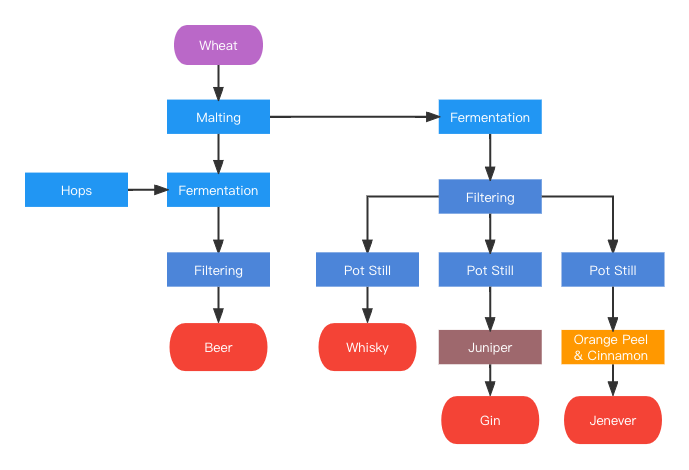
Whisky
Whisky is originally produced in Scotland, it is also call as Scotch. At the same time, the same techniques have been transplanted to America and Asia. Famous and high quality whisky are produced in Scotland, USA and Japan. And the flavor of whisky is mainly from the aging oakwood cask.
Jenever
Jenever is produced in the Netherlands. Firstly it was used as a herbal drink for the sailors. When distilling, the distillate will go through a container with cinnamon and orange peel, this is how the most traditional jenever gets its smell and taste.
Gin
English learnt how to make jenever from the Dutch and then replaced cinnamon and orange peel with juniper. Then jenever becomes famous gin.
Other Material Based Spirits
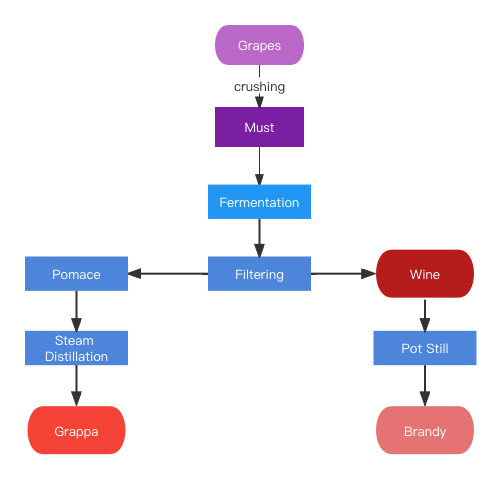
Grape Based - Brandy and Grappa
Brandy and grappa are both grape based.
Brandy
Brandy is distilled wine.
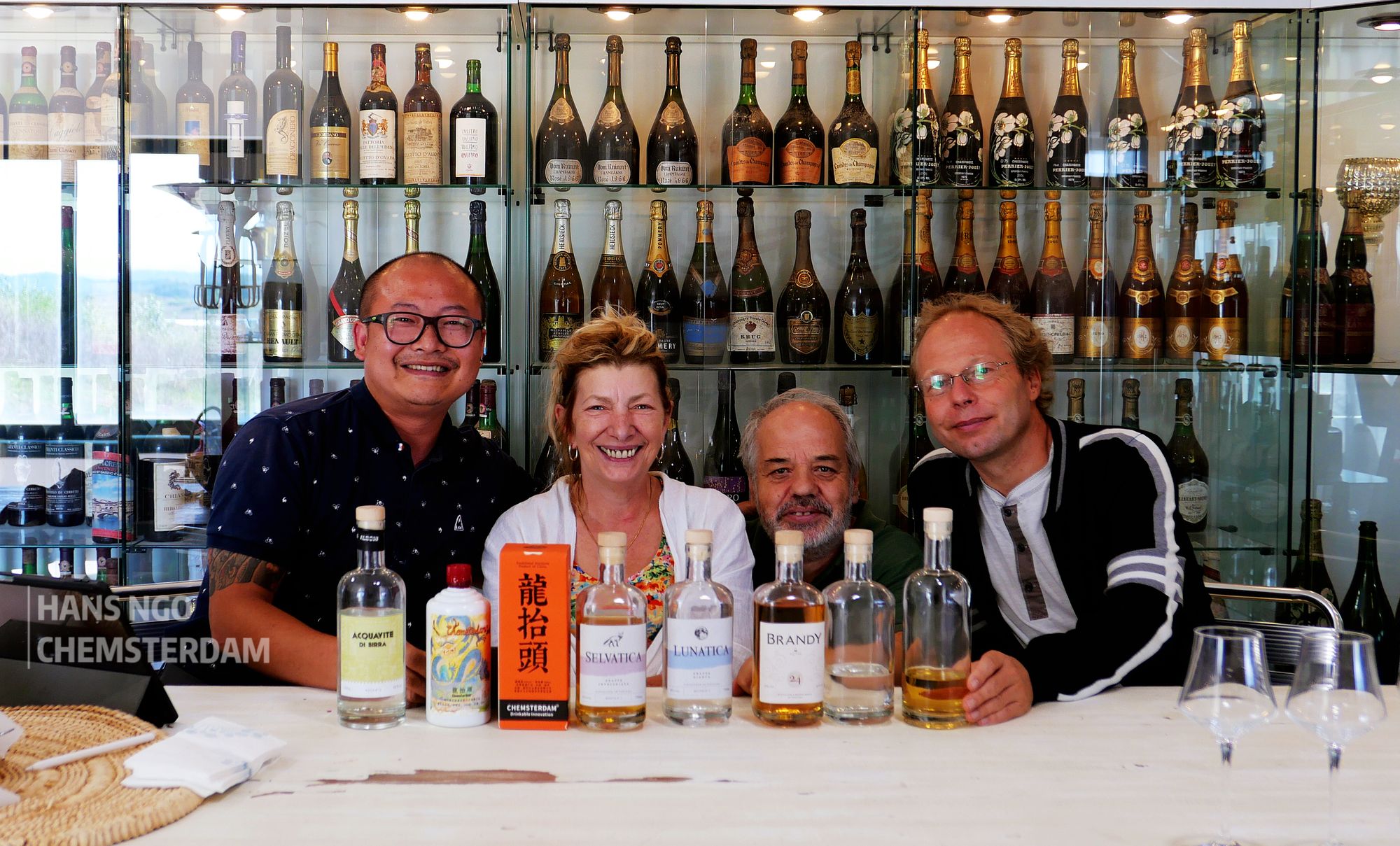
Grappa
After wine is ready and filtered, pomace is left as the solid waste. However there is still alcohol left in the pomace. Distillate from pomace with steam pot is grappa. Most of grappa distillery buy pomace from the winery close by.
Grappa is mostly produced in Tuscany, Italy, because there are lots of family-owned winery. The local wine bottled without label is dry, fruity and flourish. If I didn't tell the local, they might not know the wine quality is the top level in the world.
Others
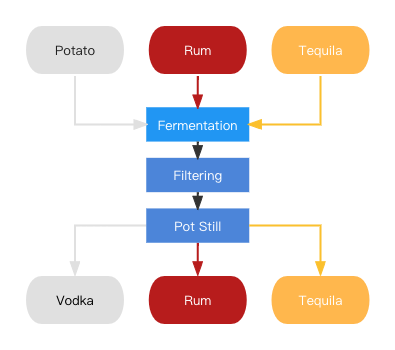
Sugarcane Based - Rum
Rum is mostly produced in Caribbean Islands Area, as there are a lot of sugarcanes. In recent years, there are some rum distilleries started in Guangxi Province in China, as there is great amount of sugarcanes in the fields.
Agave Based - Tequila and Mezcal
Tequila is mostly produced in Mexico. And it is said only tequila produced in that specific area is called Tequila. I am OK with it.
Fermentable Sugar Based-Neutral Flavor Spirit - Vodka
Vodka is mostly produced in Eastern Europe and Super Northwest of Asia, Russia. Common sources include grains (such as wheat, rye, and corn), potatoes, and sometimes fruits or sugar beets.
Plum Based - Slivovitz
Slivovitz, also known as slivovice or šljivovica depending on the region, is a traditional fruit brandy made from damson plums. It is primarily produced and consumed in Central and Eastern Europe, particularly in countries like Serbia, Croatia, Bosnia, Czech Republic, Slovakia, Poland, Hungary, and Bulgaria.
Conclusion
All food and fruits can be fermented and then distilled into spirits with special features, some combinations have been selected by the market and now they are more and more popular, and others are no longer being practiced. Every single existing spirit has got its own features to bring you some special experience, otherwise it can be its own kind.
Keep yourself being curious about the local flavor.
Whenever and wherever you visit a new place, please ask for the local drink. I remember my first evening in Florence, I got the Negroni.
Proper amount of spirits can bring us joy and health, so let us drink wisely.
